Wierdijk Enkhuizen
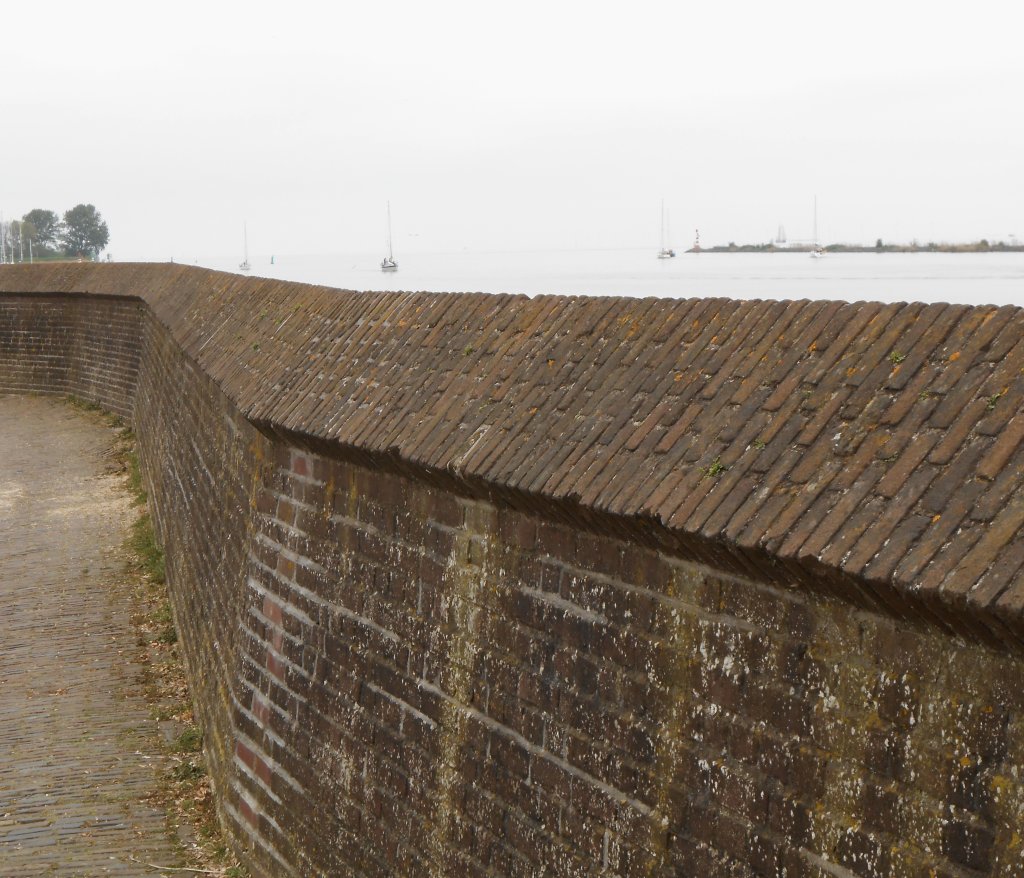
For the town of Enkhuizen, originally a fishing village, a boom period began around 1600. To expand port capacity, the Wierdijk had been constructed in 1567. In the years that followed, large residential buildings and warehouses began to dominate the streetscape. Such activity was not to be taken for granted. Now the city and the IJsselmeer are protected by the Afsluitdijk, but in those days this characteristic sea wall was the only obstacle to the wild Zuiderzee.
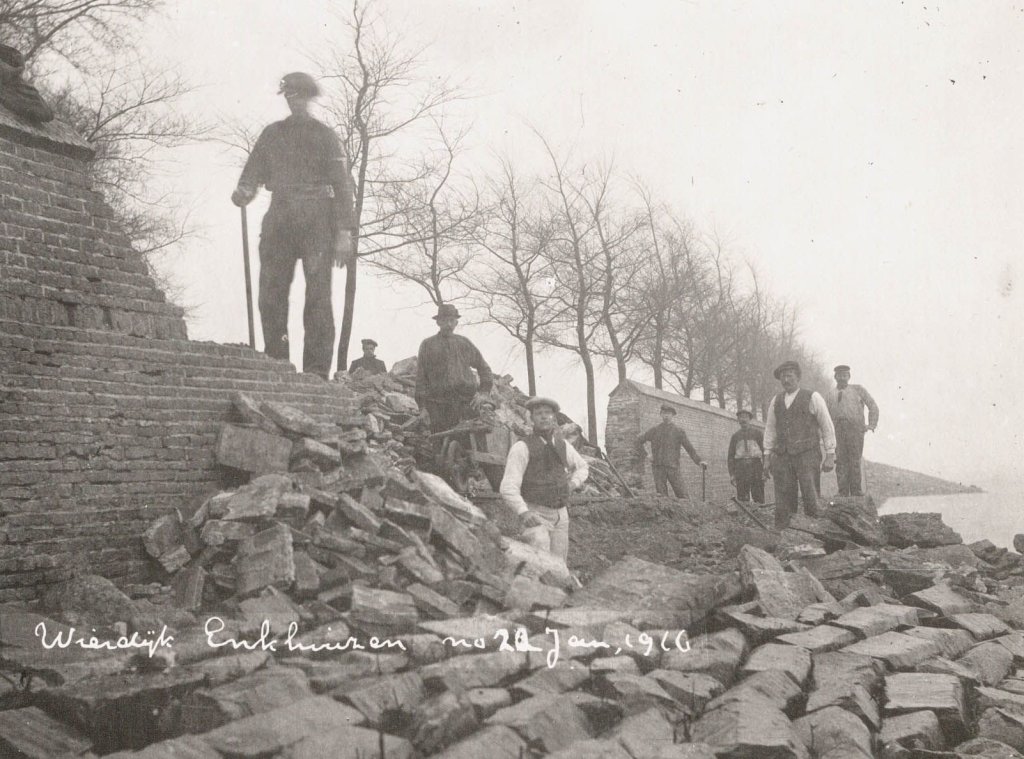
The storm surge of Jan. 13-14, 1916, is sometimes called a forgotten disaster, but it was the decisive factor in rearranging the Zuiderzee region. Between Edam and Amsterdam, the sea dike broke in several places. Near Andijk, the Westfriese Omringdijk barely held, and in Enkhuizen, the Wierdijk was severely damaged. Holes of tens of meters long had been punched in the wall. It was necessary to make immediate repairs.
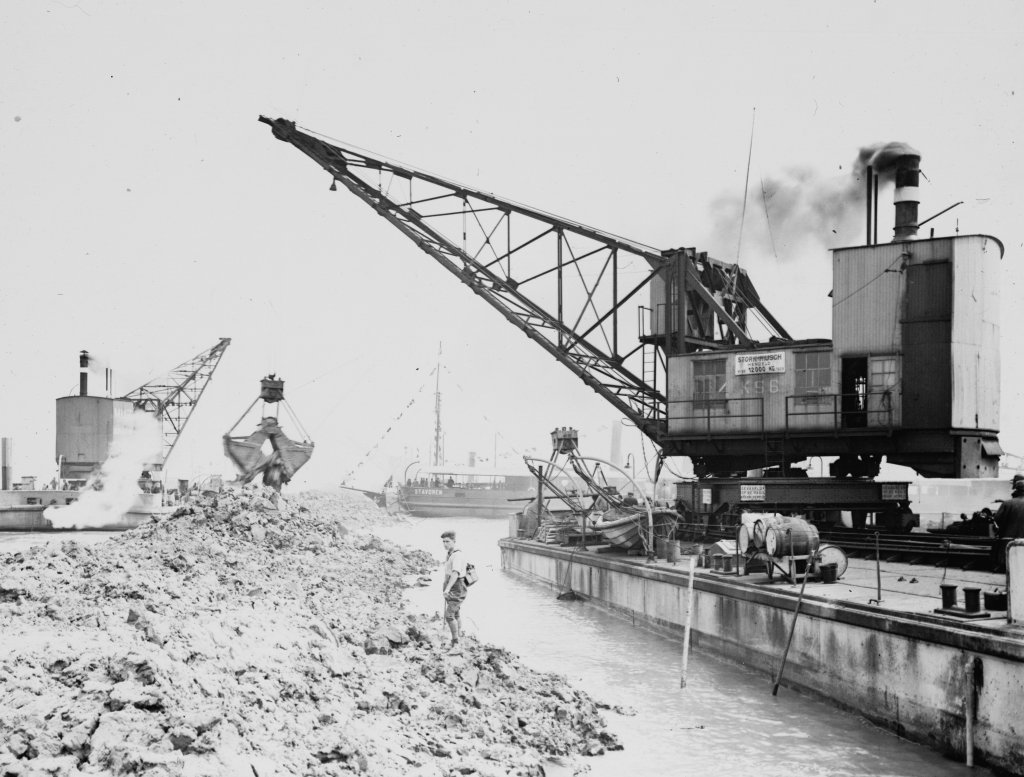
After the disaster, the Zuiderzee Act of Minister of Water Resources Cornelis Lely was a decided affair. The law sealed the fate of the Zuiderzee: it was divided by a dike between Den Oever and Friesland, the Afsluitdijk (completed in 1932). Since then, Enkhuizen has been situated on the IJsselmeer. This photo shows the construction of the Afsluitdijk. Cranes pour boulder clay into one of the closure holes.
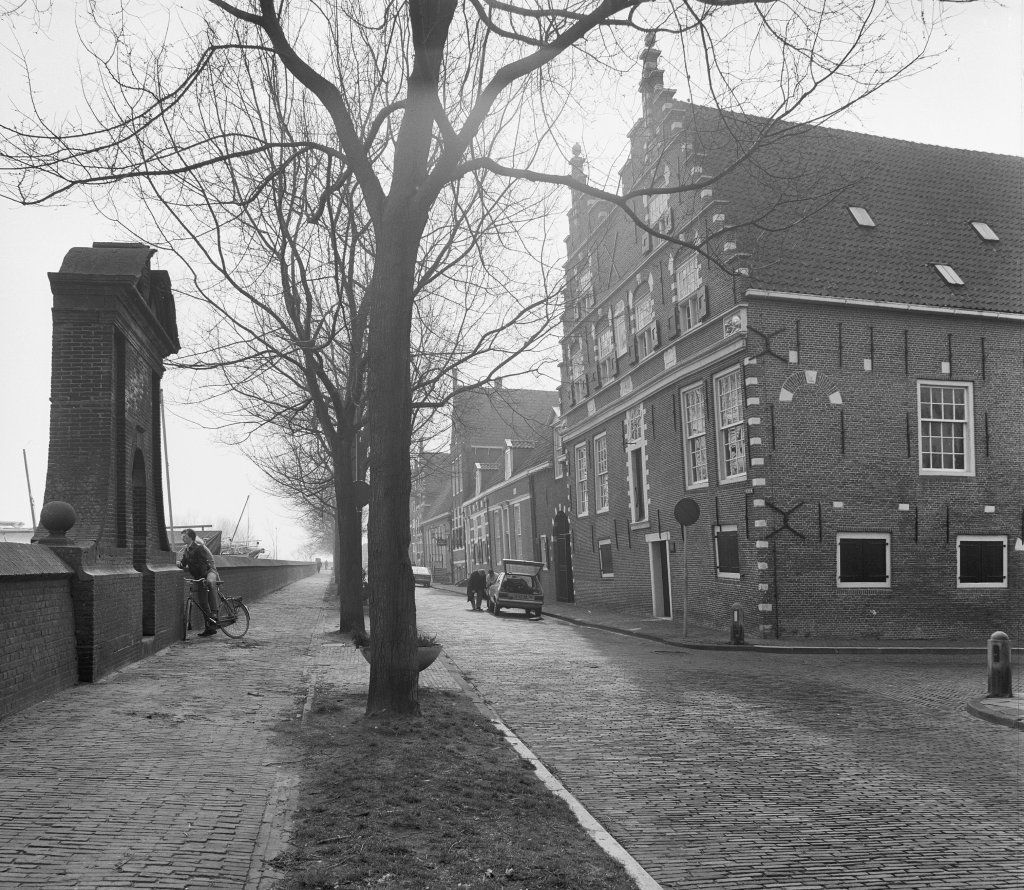
The United East India Company (VOC) had warehouses and auction houses on the Wierdijk. One of these was the Peperhuis from 1625. It was originally a residential and warehouse building commissioned by Pieter van Beresteyn, a wealthy merchant and shipowner. The VOC bought the building in 1682 and used it to store spices such as pepper and cinnamon. After the Company's bankruptcy in 1799, most of the VOC buildings in impoverished Enkhuizen were demolished. The Pepper House remained standing and retained its function for other businesses until 1947 when the Zuiderzee Museum moved in.
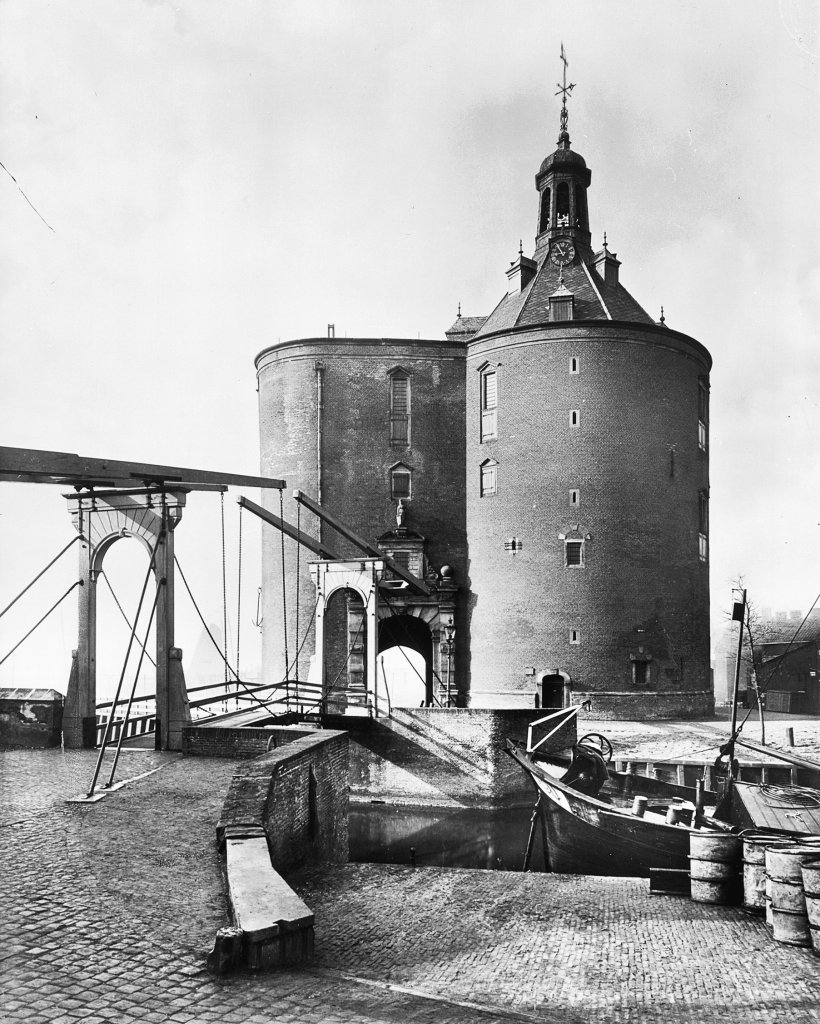
One of the eye-catchers of Enkhuizen is the Drommedaris, built in 1540 and a remnant of the city wall. The passage and drawbridge are on the route of the Omringdijk, the water runs under the bridge to the Old Harbour. The Drommedaris has had various functions: from gateway, defense tower and prison in the past to cultural venue today. On the second floor there are still cells that used to be in a structure on the roof. Every Thursday at noon, the city carillonneur rings the bells of the carillon in the dome tower.
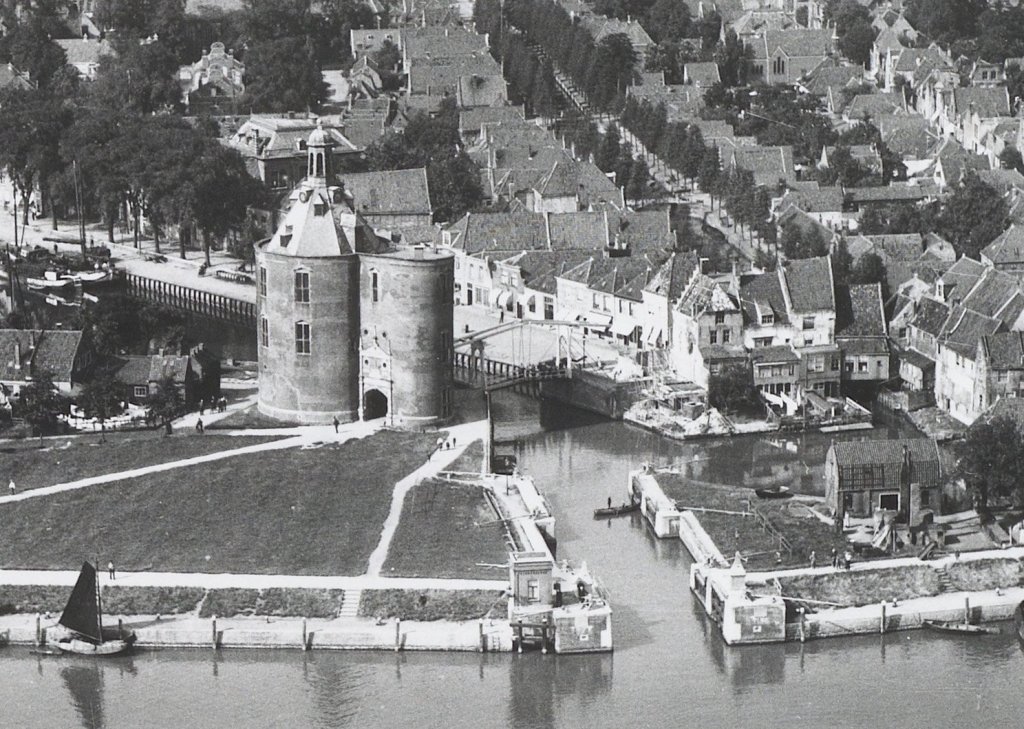
The Old Harbour behind the Drommedaris was in open connection with the Zuiderzee until the nineteenth century. On February 4, 1825, the city experienced a fearful day. A storm blew the water straight into the harbor. Quays were flooded and if the wind had not subsided after noon, the city would have been flooded. Enkhuizen had learned its lesson. Under the supervision of the Department of Waterways and Public Works, the harbor was closed off in 1827 with the Sassluis lock. This lies in front of the Drommedaris and has been owned by the Water Board since 1996.

Although Enkhuizen's water safety has been greatly enhanced since the construction of the Afsluitdijk, the battle against the water continues. The latest inspection raised doubts about the reliability of the Sassluis: can the pair of wooden doors withstand high water during storms? And what if the raging water carries something that gets stuck between the doors? The Water Board is therefore going to improve the lock.